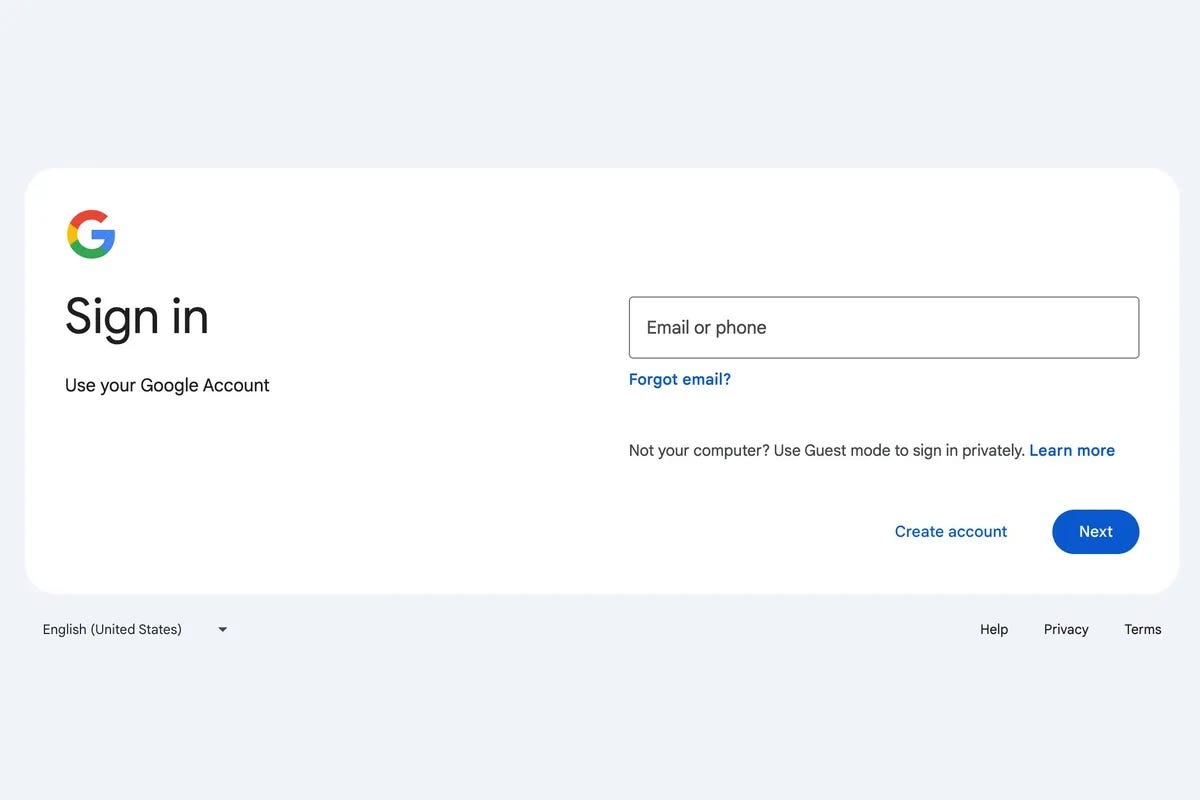- A1 Engineering
- Posts
- Why Action Beats Words: Embracing 'Show, Don't Tell'
Why Action Beats Words: Embracing 'Show, Don't Tell'
Driving impact and influence through demonstrative communication
Google made a classic mistake. For the last several weeks many of us have been seeing this message.

Anytime you went anywhere near gmail, this popped up. The promise of a new and improved sign in experience beckoned us. They are setting us up for something great! Something AMAZING. Or as the French would say, incroyable. The age of absolutely game changing logins is coming right up!
And then Google did the grand reveal. Unfortunately this is what it looked like —

How underwhelming is that? From a user’s perspective, it is actually worse. The username and password inputs are now on different pages which increases the time-to-login. Now we all know there’s only so much you can do with login screens, so my hyperbole is a sharpening of contradictions. However, Google committed a cardinal sin. They hyped something up, plastered an upcoming change everywhere and then didn’t stick the landing. Sure, there might be technical improvements under the hood maybe with other bells and whistles. But that is not the point. The point is that Google got people excited about a new feature and then viscerally disappointed. Unfortunately this seems to be Google’s MO these days. cough Gemini cough
So what’s the big takeaway here? Show, don’t tell. Too often people fall into the trap of announcing they are about to do something rather than just doing it. In a perverse way it might feel that telling someone they will do something is in of itself somehow doing that thing. The only exception I can see for something to be announced up front is if things require coordination from other parties.
In the case of Google, rather than announce they were making a change plastered everywhere in the login experience, they could have just started A/B or beta testing the change with a few people and gauged their feedback. Over time, they could have released the changes to everyone.
Let’s take a simple example from a day at work. I was struggling to understand how two different features in our platform were connected to each other and seemingly no one else did either. At this point I could go one of 2 ways —
Option 1: I could tell people that I was going to produce an architectural diagram or writeup of how these 2 features interplayed
OR
Option 2 — I could write that writeup
Now in option 1 —the only positive is that I have announced an intention to the world. The cons are
I have not produced any value yet.
If I don’t follow through, I havent delivered on my words
AND I am no closer to understanding how these features work together
In option 2 — there are none of the cons mentioned above and I have produced value immediately — which by itself is the only thing that is important.
When in doubt, show, don’t tell. Have a bias for action.
Reply